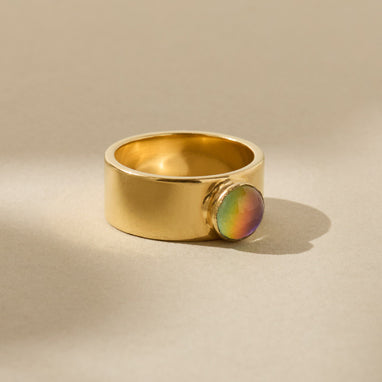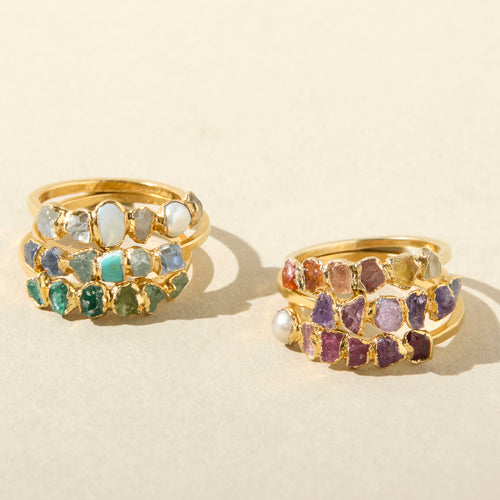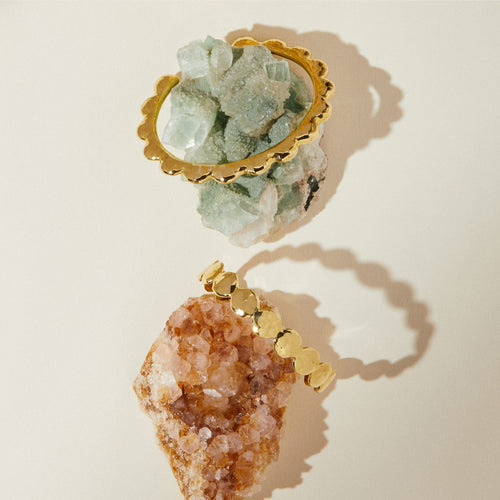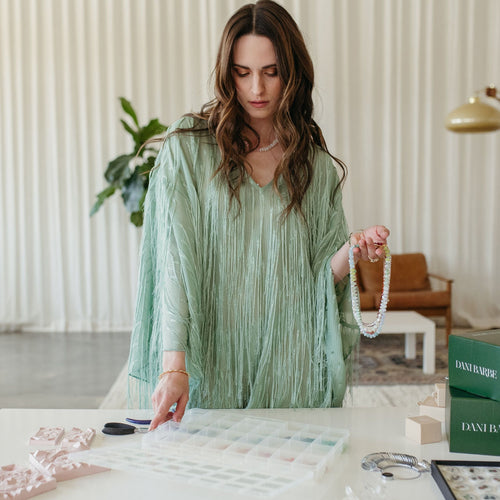What Does Blue Mean on a Mood Ring?
Mood Ring Colors
Mood rings have been a popular accessory for decades, beloved for their supposed ability to reflect the wearer's emotional state. When the temperature of the wearer's skin changes, the color of the mood ring also changes, indicating a shift in mood. If you are curious about the science you can learn more here.
The colors on a mood ring are associated with different emotional states, and the color blue is often one of the colors that appears. But what does blue on a mood ring really mean?
The Significance of Blue
Blue is a color that has a lot of meaning and significance. In general, blue is associated with introspectiveness, calmness, serenity, and stability.
Psychologically, blue has been linked to feelings of relaxation, trust, and security. Blue is also commonly associated with the ocean, the sky, and nature, which can create feelings of peacefulness and tranquility.
Blue and Mood Rings
On a mood ring, blue can have a few different meanings depending on the shade and context. Generally, blue on a mood ring is thought to represent a relaxed and peaceful state of mind. It can indicate that the wearer is feeling calm and collected, with a clear and level head. Blue can also represent introspection and deep thinking. This may indicate that the wearer is reflecting on their emotions or thinking about a particular situation.
When blue appears on a mood ring in combination with other colors, it can provide additional information about the wearer's emotional state. For example, blue and green together could represent a sense of balance and harmony, while blue and purple could indicate a more spiritual or introspective mood. The meaning of the colors can also have some overlap the closer the two colors are to each other.
It's important to note that there are a number of factors that can affect the color changes on a mood ring, and it's not always a reliable indicator of the wearer's mood. Environmental factors such as temperature and humidity, as well as physical factors such as activity level and skin tone, can all affect the color of the mood ring. Additionally, the wearer's perception of their own emotions may not always align with the color of the ring.
Mood Rings and Self-Reflection
Despite the criticisms that mood rings are not a reliable tool for measuring mood, they can still be a valuable tool for self-reflection and awareness. By paying attention to the colors on a mood ring and considering the context in which they appear, wearers can gain insight into their own emotional states and patterns.
Blue on a mood ring can represent a variety of emotions and states of mind, including introspection, relaxation, and peacefulness. While mood rings may not be the most reliable indicator of mood, they can still be a useful tool for self-reflection and awareness. Whether you're wearing a mood ring or not, paying attention to your own emotional state and taking time to reflect can be an important part of maintaining good mental health.
Treat yourself to a mood ring and in those moments when you are introspective take a glance and see if your mood ring is turning blue!












Leave a comment